When I was a boy growing up on Bayou Lafourche in southeast Louisiana, everyone spoke French and all the men around me were boatsmen. My uncles, cousins, and brother-in-law—all the men closest to me—made their livings with boats. Some of them were shrimp fishers, some oystermen, and still others worked boats in the oilfields. When I was 12, I wanted to go duck hunting, but I didn’t have a boat. One of those men, a shrimper and fur trapper who had built many boats (one as large as 50′), supplied me with his patterns and guidance for a pirogue, a 14′ double-ended flat-bottomed skiff made from a single 14′ sheet of fir marine plywood. In those days we could buy long sheets of marine plywood and beautiful bald cypress at a local lumber yard.After a few more wooden skiff and steel workboat builds, I decided in retirement to build another wooden boat. I was thinking skiff; at first, a skiff à joug—a Creole skiff made from four cypress planks with a yoke (joug) for forward-facing rowing. I decided that it wouldn’t have much utility today, but I still had that hull shape in my head.One day while searching the web, I came across a video of a skiff designed by Doug Hylan. He called it a Chesapeake Crab Skiff after boats designed for working in Chesapeake Bay. I thought, wow, what a beautiful little skiff, a working skiff much like those I grew up with. I went directly to his website and discovered that, in addition to that boat, he offered plans for a smaller version called Little Crab. I found it to be even more attractive than the Chesapeake Crab Skiff. Its profile, graced by the elegant sweep of the sheer, was just what I was looking for. I downloaded the study plans, looked them over, and I was sold. It was a gorgeous small skiff that I thought would be satisfying to build and, at the same time, help me recapture some of my skills as a boatbuilder. On top of all that, it could be sailed, something I had not done in many years and dearly missed, and it might even be small enough to cartop.
Join The Conversation
We welcome your comments about this article. To include a photo with your remarks, click Choose File below the Comment box.


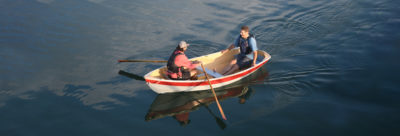

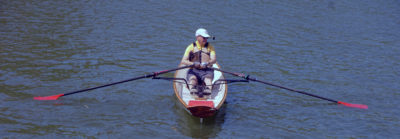




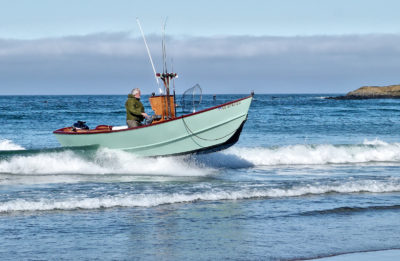
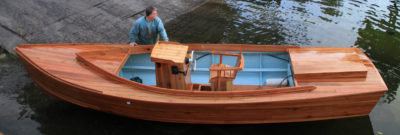

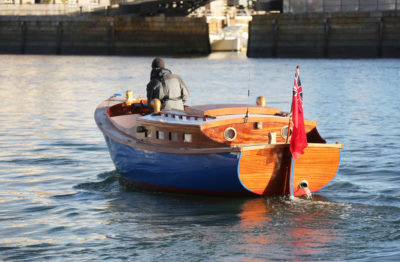
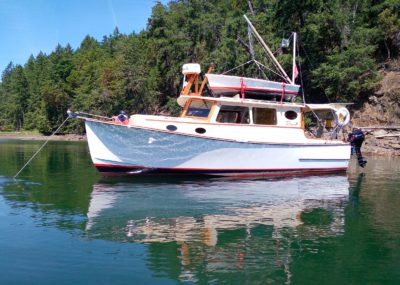
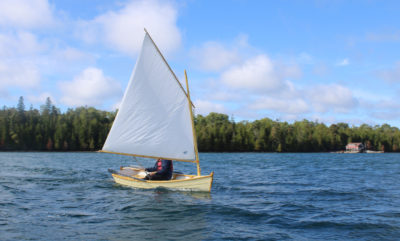

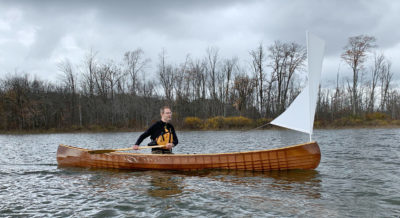
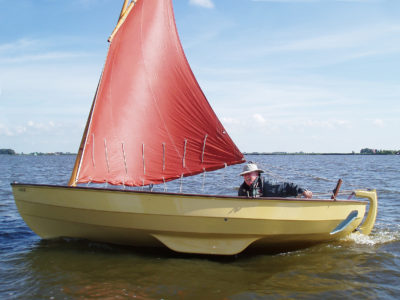
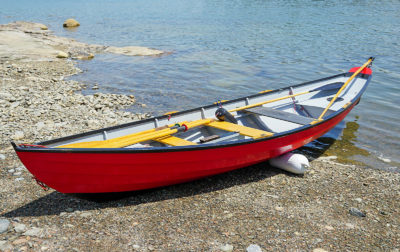
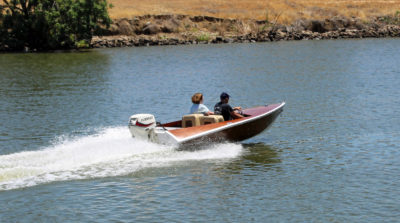
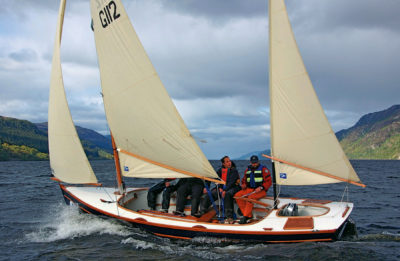
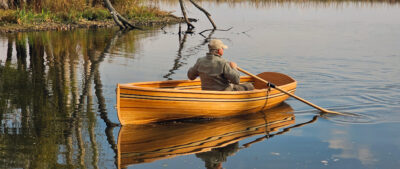

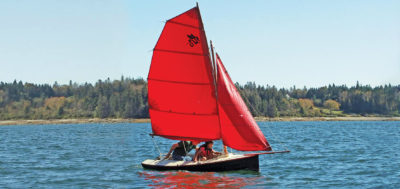
Great article,
I’d bought the plans for Little Crab a few years back and this write-up pretty well seals the deal……I have to get started…..
Ditto here.
What a lovely boat and a great article. Thank you!
I grew up in Lafourche Parish too amongst the ship yards and trawling boats. My dad worked in a couple of the ship yards. The Little Crab and the larger 15′ version by Doug Hylan caught my eye earlier this year. It’s really neat to see that someone from the same bayou region as me picked this boat!
I wonder if the 65′ oyster lugger he converted is the WYOMING?
I’ve got one of these. Built by H&B. Although I changed the sail plan to a Crawford Melonseed Sail (62 sq-ft Sprit rig) Sail by Dabbler, oars by Dreher, oarlocks by Concept2.
Fiona is peachy.
Howard Chapelle calls this hull style (where the chines and keel batten come together at the stem) Chesapeake, or modified sharpie. Sam Rabl (as well as others, I’m sure) also designed boats with this method of construction. The advantage is fairly simple building, but with greater displacement and improved seaworthiness over a straight flat bottom.
When I was in high school I built a similar boat (a 12 footer) from a magazine article. It was kind of a crappy design, lightly constructed, but it worked, after a fashion. A clue to its crappiness was that the chines had to be kerfed toward the bow to let them take the required bend. Even in my youthful naïveté, it was obvious to me that Kerfing weakened the chines, but it was the best design available to me at the time. Of course the plywood planking stiffened it up somewhat. With a 7.5 hp outboard, it would plane at maybe 15 mph, but the engine I owned was a mid-1930s 4hp Evinrude opposed twin that I paid $25 for with strawberry picking money. Whenever I could get it running, it moved the boat at very modest speed.
After I sold that boat, I happened across a 12′ round bilge lapstrake dinghy which I bought for $40. I had to dip into college funds for that purchase. It was lovely boat, but very old and somewhat worn out. I tried to glue splines into the cracked planking, but after a spell in the water for a while (there was a small boat livery service on the lake where I kept it during the summer) it tightened up quite adequately. I also had to bend in some sister frames to reenforce cracked originals. My first venture into steam bending.
My high school buddy and I loaded the boat with camping gear and headed up Lake Chelan on a breezy, choppy day. Occasionally spray would wet the spark plugs, killing the engine, but after a wiping down, we would be running again. Our camping destination was Prince Creek, about 30 or so miles from Chelan. During the night, deer wandered through and a skunk rattled the dirty cans in our kitchen. Heading back down lake, we had the same white caps as before, but this time we had fun surfing on the following seas. It took alert steering to avoid broaching, The waves of course were moving faster than we were.
Eventually I sold that motor, shortly before it became valuable as an antique.